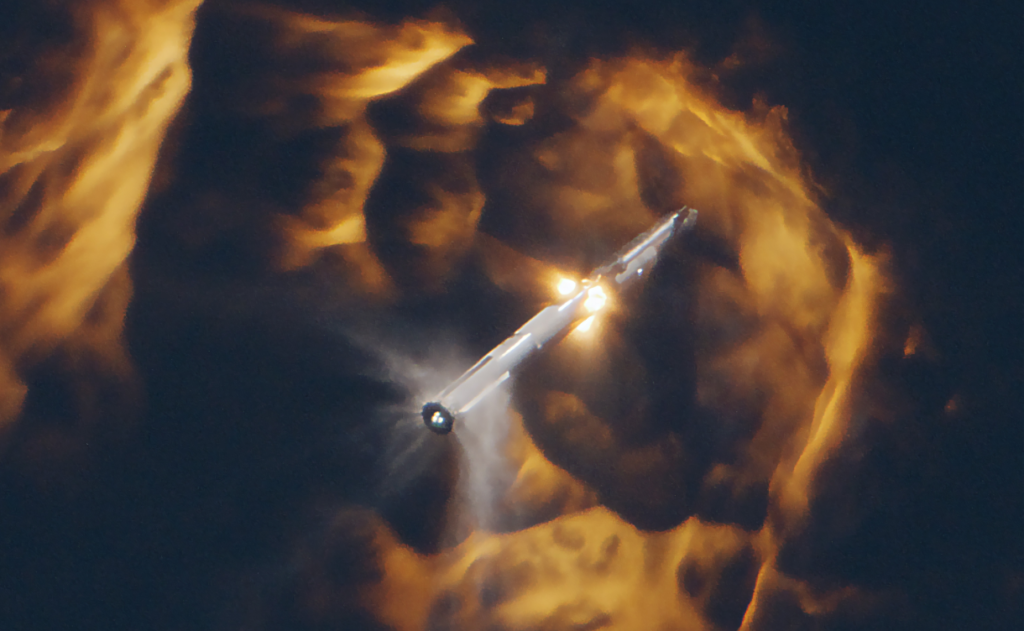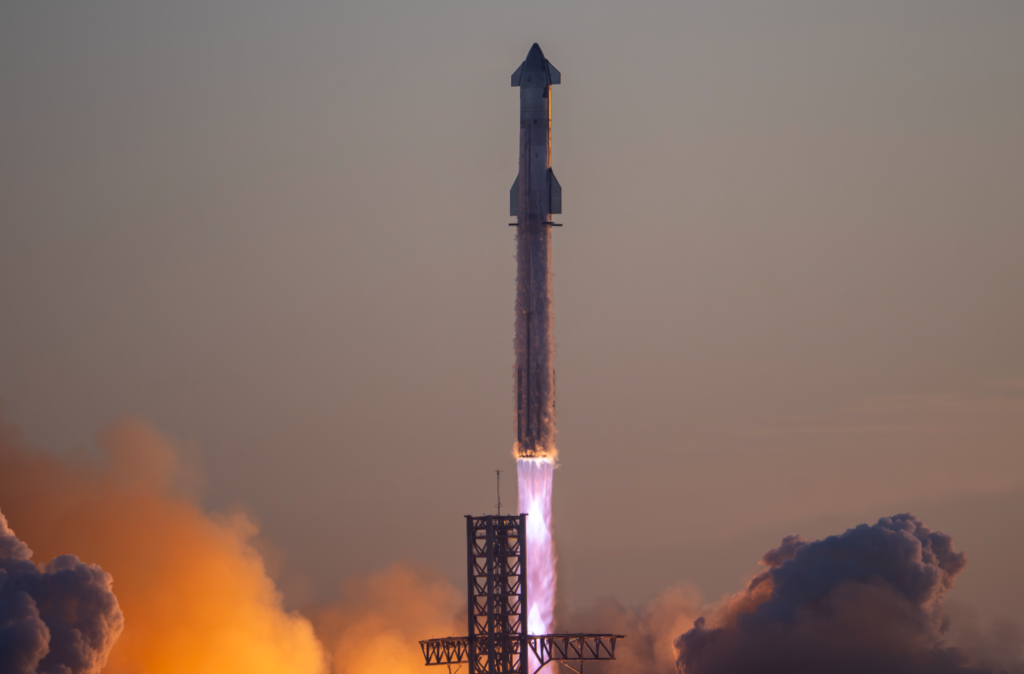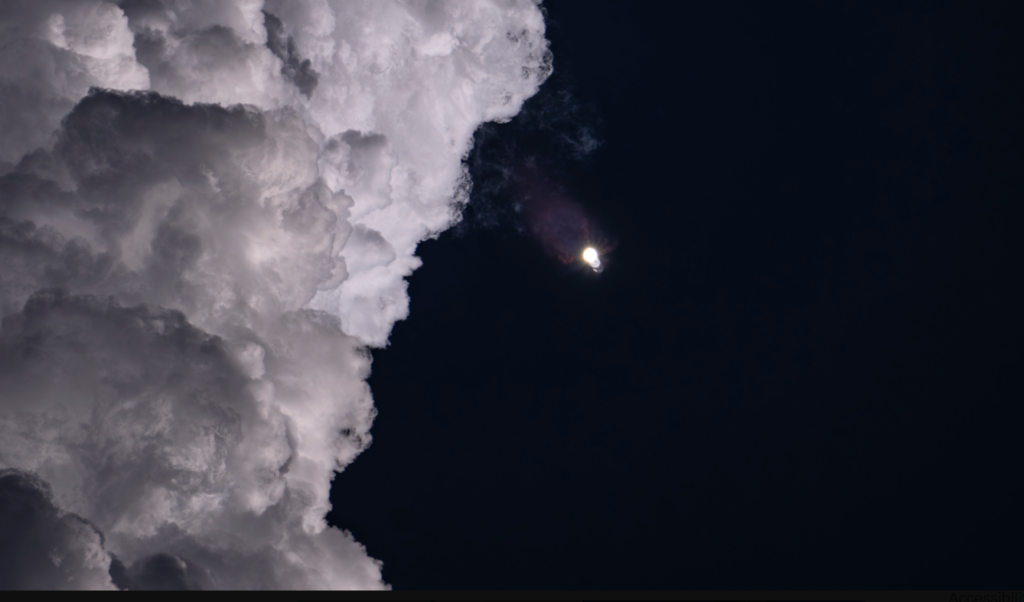
What Exactly Happened On Starship’s Second Launch Attempt?
After 212 days of repairs, upgrades, and iteration, SpaceX just attempted the second integrated test flight of the Starship launch vehicle, and the improvements were obvious. The last flight was on April 20th earlier this year and ended with a bang after a few issues with the launch pad, engines, internal fires, etc. This time around, we saw a very different result from engine ignition all the way to an eventual explosion.
With this test complete, SpaceX now has a lot of work ahead of them as they find out exactly what went wrong, and launch the next Starship prototype. Here I will go more in-depth into what happened on this second flight test, where the issues arose, what to expect in the near future, and more.
Second Launch Attempt

With just 1 minute left until launch, and the sunrise in the background, all the Raptor engines were chilled, the rocket was filled with around 10 million pounds of propellant, and it prepared to startup its engines. As the clock hit T-40 seconds, there was a planned hold for a few minutes as teams checked each system along with ensuring no civilian boats were within the restricted launch area. Despite SpaceX having around 15 minutes of time to hold, it only took around two minutes before the clock resumed counting down.
As the clock hit close to T-5 seconds, the water-cooled steel plate began shooting out water in preparation for liftoff. Then right at T-0, all 33 Raptor engines ignited and began blasting the pad. Only around 4 seconds later and Starship was in the air. By T+10 seconds it had cleared the pad entirely. This was much faster than the first integrated test flight which was by design. Soon after the vehicle began accelerating with all 33 Raptor engines working properly, as indicated by the flight data provided at the bottom.
At T+42 seconds SpaceX switched camera angles which gave a great view of the bottom of the booster. Here you could see that all 33 Raptor engines were still working without a single engine missing. It’s important to point out that on the last Starship integrated test flight, by around 40 seconds in there already were multiple missing engines.
By T+1:12 they called out that Starship had reached MaxQ, which is the moment of peak mechanical stress on the rocket. At that point, Starship was traveling around 1500 km/h and close to 15 km high. These numbers continued to increase over the next minute or so before the biggest milestone and main goal of this mission, stage separation. At T+2:40 we first saw the flight data indicate that all but three of Super Heavy’s engines had shut down. Just seconds later mission control called out that booster engine cutoff had occurred. You could see the bottom of Super Heavy go from a bright light to a dim point. Then, at T+2:48 the upper-stage engines ignited, creating massive ripples in the atmosphere. Just a second later and the upper stage successfully disconnected from the booster. Right away Super Heavy began its flip in preparation for a return to the ground.
As the camera panned to the booster, it completed its flip in just a few seconds and began heading down range. However, this also marked the first visible error in the entire launch. At T+3:15 and the seconds following you could see what looked like some of the engines attempting to light for the boostback burn. A small explosion could be seen followed by learning fluids. Finally, at T+3:20 seconds, the entire booster experienced a rapid unscheduled disassembly. This explosion shot debris and created a massive white cloud before the camera panned back to the Starship upper stage which that entire time and been gaining altitude.
4 minutes in and you could just barely see the Starship upper stage. At that point, the vehicle was traveling over 7500 km/h at an altitude of 117 km. The flight data also highlighted that all 6 Raptor engines were working properly. Over the next 3 minutes, the upper stage continued to accelerate and get closer to its sub-orbital destination. This was up until around 8 minutes into the launch when you could barely see the vehicle. Looking very closely, at T+8:08 you can see large ripples and disruptions in the atmosphere indicating that there could have been an explosion. Also, focusing on the flight data, at the exact same time you see that all 6 engines stopped running and the vehicle’s speed also stopped increasing. On the flight profile, the Starship engine cutoff was scheduled to happen at T+8:33 into the flight.
The stream then cut to a screen that said “awaiting acquisition of Starship”. Around that time the SpaceX commentors where also under the impression that the vehicle was still intact and beginning its journey around the Earth. That was until they said in a quote, “We have lost the data from the second stage, we heard a callout that we were in terminal guidance, but we haven’t gotten any more data since then so we think we may have lost the second stage. It was then revealed that the second stage explosion was caused by the activation of the Flight Termination System. As far as why this happened is not exactly clear. It could have been that the upper stage was off track, an issue with the engines, or a mistake. Either way, this marked the end of Starship’s second integrated test flight and a success for the company who primarily wanted to complete stage separation. In the coming days, we can expect to hear a lot more from the company as they determine exactly what happened.
A Big Improvement

Compared to the first launch of Starship earlier this year, the second test flight showed quite a bit of improvement in a few different areas. If this second launch had gone perfect, the booster would have completed a boost back burn before simulating what a landing would look like over the Gulf of Mexico. The upper stage would have coasted around the globe for close to an hour and a half until it reentered the atmosphere and crash-landed off the coast of Hawaii in the Pacific Ocean. In reality, an explosive ending is not the ideal option but it’s a realistic aspect of SpaceX’s methodology. They are building Starship at a rapid pace and nothing provides more information than a real test.
This second flight debuted the hot-stage separation system and a new electronic Thrust Vector Control (TVC) system for Super Heavy Raptor engines, in addition to reinforcements to the pad foundation and a water-cooled steel flame deflector, among many other enhancements. Starting with the pad, on the first Starship flight test, a concrete pad was used which was destroyed by the thrust of 33 Raptor engines. This show concrete and debris in every direction damaging structures at Stage 0 and flying hundreds of meters. To try and fix this problem, between the first launch and today, SpaceX installed and tested a massive water-cooled steel plate. Looking back at the beginning of today’s flight, the water began flowing seconds before engine ignition.
Most importantly, no debris can be seen flying in the air as Starship clears the tower, unlike the first flight. This is a good sign that the pad looks to have not only protected the vehicle and surrounding structures, but stayed intact as well. The goal for SpaceX is to launch, gather data, and launch again. The state of the pad and various infrastructure at Stage 0 plays a big role in how fast the company can prepare and launch again.
Another change that looks to have done a great job was the new electronic thrust vector control system for the Super Heavy Raptor engines. During the first flight, there were a few issues that stuck out as the main reasons for failure. The Raptor engines, for example, experienced multiple problems throughout the test. Multiple engines were disabled during the launch sequence and even more failed during the flight. Eventually, the spacecraft also lost thrust vectoring control of the Raptor engines, which led to the rocket starting an out of control tumbling motion. This time around, all the way until stage separation, all 33 Raptor engines looked to have been firing as planned without any issues. There was no partial loss of power or small explosions which were seen on the first flight.
Interestingly, even without the application of any new information gained from this test flight, the next Starship prototype is already much more advanced and upgraded than the rocket we just saw lift-off. With each new prototype, SpaceX is improving the design and build of the vehicle.
As far as the future of Starship, it’s looking very promising. The next few weeks will be full of review and talk as SpaceX figures out what exactly worked and what didn’t. They will then apply this information to the next launch vehicle and try to launch it as soon as possible. If the overall future test campaign goes well, actual people could climb aboard Starship for the first time just a few short years from now. Not long ago, NASA selected Starship to be the first crewed lander for its Artemis moon program. Here, the SpaceX vehicle will put astronauts down near the lunar south pole on the Artemis 3 mission, which is targeted to launch in 2025. To add to this, SpaceX has already sold two private around-the-moon Starship missions as well. For example, one mission will fly with a crew of eight artists and influencers. While there have been concerns regarding the future timeline and whether or not SpaceX can complete Starship in time, this test flight is a great step. Something we can look forward to seeing in the coming years.
Conclusion
SpaceX just completed the second integrated test flight of Starship and it did not disappoint. While not perfect, they managed to get through stage separation which was the main goal of the mission. We will have to wait and see how it progresses and the impact it has on the space industry.
